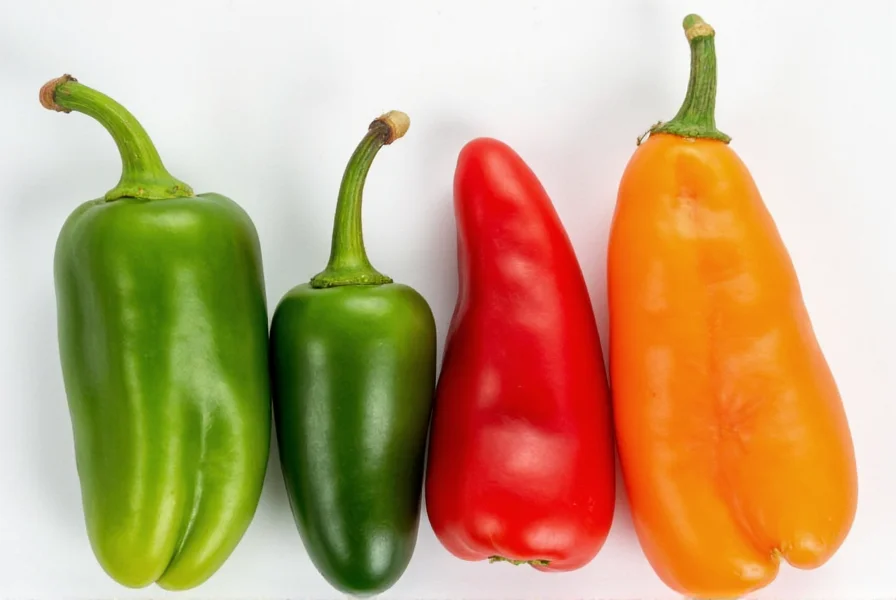Understanding where serrano peppers fall on the Scoville scale helps home cooks and culinary professionals select the right pepper for their recipes. Developed by pharmacist Wilbur Scoville in 1912, the Scoville scale measures capsaicin concentration—the compound responsible for a pepper's heat. While modern high-performance liquid chromatography provides more precise measurements today, the Scoville Heat Unit (SHU) remains the standard reference for comparing pepper heat levels. Historical evolution of this measurement system reveals critical advancements: in 1912 Scoville introduced subjective human testing, by the 1980s chromatography replaced taste panels for objectivity, and modern standards now convert lab measurements to SHU equivalents for consumer clarity—a progression documented by the Smithsonian National Museum of American History (https://americanhistory.si.edu/pepper/pep09.html).
Where Serrano Peppers Fit in the Pepper Heat Spectrum
Serrano peppers occupy a distinctive position in the chili pepper hierarchy. Their heat intensity surpasses common jalapeños (2,500-8,000 SHU) by 2-4 times while remaining substantially milder than habaneros (100,000-350,000 SHU). This intermediate heat level makes serranos versatile for salsas, guacamole, and Mexican dishes where noticeable heat is desired without dominating other flavors.
Factors Affecting Serrano Pepper Heat Levels
Several variables influence where individual serrano peppers fall within their 10,000-23,000 SHU range:
- Growing conditions: Stress from limited water or nutrients increases capsaicin production
- Ripeness: Red serranos (fully ripe) often register higher on the serrano pepper Scoville chart than green varieties
- Plant genetics: Different serrano cultivars naturally produce varying heat levels
- Part of the pepper: The placenta (white ribs) contains the highest capsaicin concentration
| Pepper Variety | Scoville Heat Units (SHU) | Heat Comparison to Serrano |
|---|---|---|
| Bell Pepper | 0 SHU | 0 times |
| Jalapeño | 2,500-8,000 SHU | 1/3 to 3/4 times |
| Serrano | 10,000-23,000 SHU | 1 times |
| Cayenne | 30,000-50,000 SHU | 1.5-2 times |
| Habanero | 100,000-350,000 SHU | 5-15 times |
Practical Applications of Serrano Pepper Heat Knowledge
Knowing the serrano pepper Scoville chart range helps in recipe development and substitution, though context boundaries significantly impact applicability. Serranos excel in fresh applications like pico de gallo or raw guacamole where their bright, grassy heat complements uncooked ingredients, but lose distinctive flavor in slow-cooked dishes exceeding 90 minutes—in these cases, cayenne provides more stable heat. Commercial producers face additional constraints: the USDA's Agricultural Marketing Service notes (https://www.ams.usda.gov/sites/default/files/media/ProcessedTomatoProductsStandards.pdf) that natural pepper variability makes serranos unsuitable for standardized products without capsaicin extraction. When substituting serranos for habaneros, use only 1/5 to 1/10 the amount to avoid overwhelming heat, but remember this ratio fails in acidic environments like ceviche where capsaicin solubility increases perceived heat by up to 30%.
Chefs often remove serrano seeds and white membranes to reduce heat by up to 80%, as these parts contain the highest capsaicin concentration. For consistent results in commercial food production, many manufacturers now use standardized capsaicin extracts rather than whole peppers.
Safety Considerations When Handling Hot Peppers
Working with serrano peppers requires precautions due to their position on the serrano pepper heat scale. Always wear gloves when handling, especially when cutting multiple peppers. Avoid touching your face, particularly eyes, as capsaicin causes severe irritation. If skin contact occurs, wash with soap and cold water—avoid hot water which opens pores and increases absorption.
When cooking with serranos, add them early in the cooking process for more integrated heat, or later for sharper, more distinct spiciness. Remember that cooking doesn't destroy capsaicin—it merely distributes it more evenly throughout the dish.

Understanding Scoville Scale Variability
The serrano pepper Scoville measurement range reflects natural variability in chili peppers. Unlike manufactured products with consistent heat levels, biological factors cause significant variation between individual peppers, even from the same plant. This explains why one serrano might taste mild while another from the same batch delivers intense heat.
Modern food science has largely replaced the original Scoville Organoleptic Test (which relied on human tasters diluting pepper extract until heat was undetectable) with high-performance liquid chromatography. This provides more precise capsaicin measurements that are then converted to Scoville Heat Units for consumer understanding.

Conclusion
Serrano peppers' 10,000-23,000 SHU range offers a reliable medium-heat option for culinary applications. Understanding their precise position on the Scoville scale compared to other peppers allows for more controlled spice management in cooking. Whether you're developing restaurant recipes or experimenting in your home kitchen, knowing the serrano pepper Scoville chart values helps achieve consistent results while respecting the natural variability of these flavorful chilies.










 浙公网安备
33010002000092号
浙公网安备
33010002000092号 浙B2-20120091-4
浙B2-20120091-4